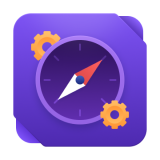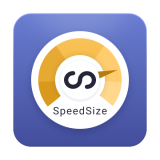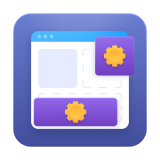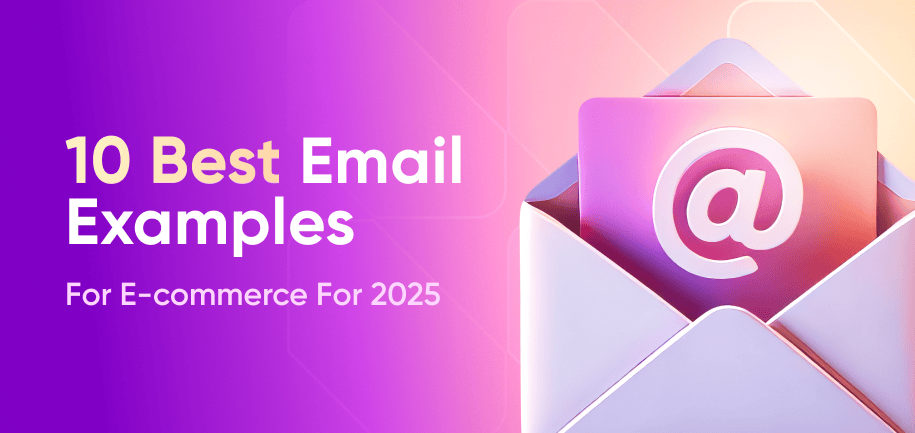It’s that time of the year where we look back on the last 12 months and make all sorts of resolutions. If one of your resolutions is to nail your sales and marketing emails, then we have a treat for you. We’ve put together 10 of the best e-commerce emails from 2025. Take a look and get inspired for your next year’s worth of emails. And do set up a Magento 2 SMTP extension to make sure the emails reach customers' inbox.
1. Personalized Welcome Emails
When a new customer signs up for your store, send a warm welcome email. Personalization is key here—use the customer's name and offer a personalized discount or free shipping as a welcome gift.
Template:
Subject: Welcome to [Store Name] – Here’s 15% Off Your First Purchase!
Body:
Hi [Customer Name],
Thanks for joining [Store Name]! We’re excited to have you with us. As a special welcome gift, enjoy 15% off your first order with the code WELCOME15. Happy shopping!
Example
When a new user signs up for eBay, they receive a warm, personalized welcome email. Since they don't really know anything about your preferences, they will offer you to personalize the account and suggest some broad, popular categories.

This is a perfect example of how eBay uses e-commerce email marketing to engage users right from the start with personalization and product suggestions.
2. Abandoned Cart Reminder
Cart abandonment is one of the biggest challenges for online stores. A simple reminder email can be the nudge a potential customer needs to complete their purchase. Offering a discount or free shipping often boosts conversions.
Template:
Subject: Oops, You Left Something Behind!
Body:
Hey [Customer Name],
We noticed you left something in your cart! Don’t worry, your items are still waiting for you. Complete your purchase now and enjoy 10% off with code CART10.
Example:
ASOS sends an email to customers who have added items to their cart or "saved" folder but haven’t completed their purchase. The email includes product images, a reminder of what’s in the cart, and a discount to entice the customer back. Attention to the tone of voice: it is never boring or generic, which makes buyers more willing to complete the purchase.

ASOS uses e-commerce email templates to drive cart recovery and boost conversions effectively.
3. Product Recommendation Emails
Use customer behavior and purchase history to recommend relevant products. This email type boosts customer retention by offering items they might be interested in based on past purchases.
Template:
Subject: You Might Also Like These!
Body:
Hi [Customer Name],
Based on your recent purchase of [Product], we thought you might love these items:
[Recommended Product 1]
[Recommended Product 2]
Check them out now and get 10% off your next order with code RECOMMEND10.
Example:
Spotify sends personalized product recommendations based on a user’s listening habits, curating new playlists or suggesting new music albums.

This e-commerce email idea works well for subscription-based services like Spotify, where customer preferences can guide email content.
4. Post-Purchase Follow-Up Emails
After a purchase, send an email to thank the customer, ask for feedback, or suggest related products. Post-purchase emails build brand loyalty and encourage repeat purchases.
Template:
Subject: Thanks for Your Purchase – We’d Love Your Feedback!
Body:
Hi [Customer Name],
Thank you for shopping with us! We hope you love your new [Product]. Let us know how we’re doing by leaving a review here. Don’t forget, you can always enjoy 15% off your next purchase with the code THANKYOU15.
Example:
After purchasing a pair of glasses, Warby Parker sends a post-purchase follow-up email thanking the customer and requesting feedback.
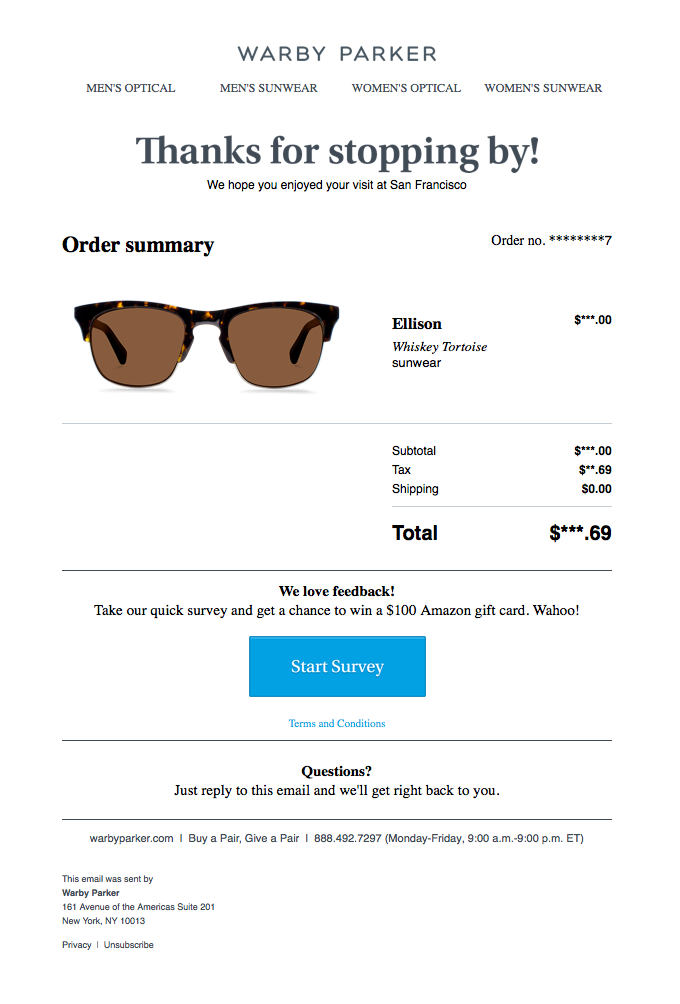
Warby Parker uses email marketing for e-commerce to enhance customer experience and encourage repeat purchases.
5. Seasonal or Holiday Sales Emails
Promote seasonal sales or special events, like Black Friday, Cyber Monday, or Christmas sales. These emails create a sense of urgency and encourage customers to act fast.
Template:
Subject: Black Friday Sale – Up to 50% Off!
Body:
Hey [Customer Name],
Our biggest sale of the year is here! Enjoy up to 50% off on all items, including [Popular Product]. Hurry, these deals won’t last long. Shop now and save big!
Example:
Puma sends a seasonal email around Black Friday or Christmas, offering significant discounts across various product categories and free overnight shipping before Christmas.

Puma effectively uses email marketing ideas for e-commerce to generate excitement and drive sales during the holiday season.
6. Birthday Emails
Send a special offer or discount on a customer’s birthday to make them feel valued. This personalized touch can significantly increase customer loyalty.
Template:
Subject: Happy Birthday, [Customer Name]! Enjoy a Special Gift from Us.
Body:
Hi [Customer Name],
We hope you have an amazing birthday! To celebrate, enjoy a 20% discount on your next order. Use code BDAY20 at checkout. We hope to make your day even brighter!
Example:
Gymshark sends a special birthday email to all of their customers. The email includes a personal birthday discount to encourage a purchase.

Gymshark leverages e-commerce email examples to create a personalized and rewarding experience for customers on their special day.
7. Flash Sale Notifications
When you have a limited-time sale or flash deal, sending an urgent email can drive quick purchases. Be sure to emphasize the time-sensitive nature of the offer.
Template:
Subject: 24-Hour Flash Sale – 40% Off Everything!
Body:
Hi [Customer Name],
You’ve got 24 hours to grab up to 40% off everything on our website! Don’t miss out on this amazing deal. Use code FLASH40 at checkout. Act fast before the clock runs out!
Example:
Barebones sends a flash sale notification email that emphasizes urgency, yet without any extra detail. The design is quite minimalistic and focuses on the flash sale message only.
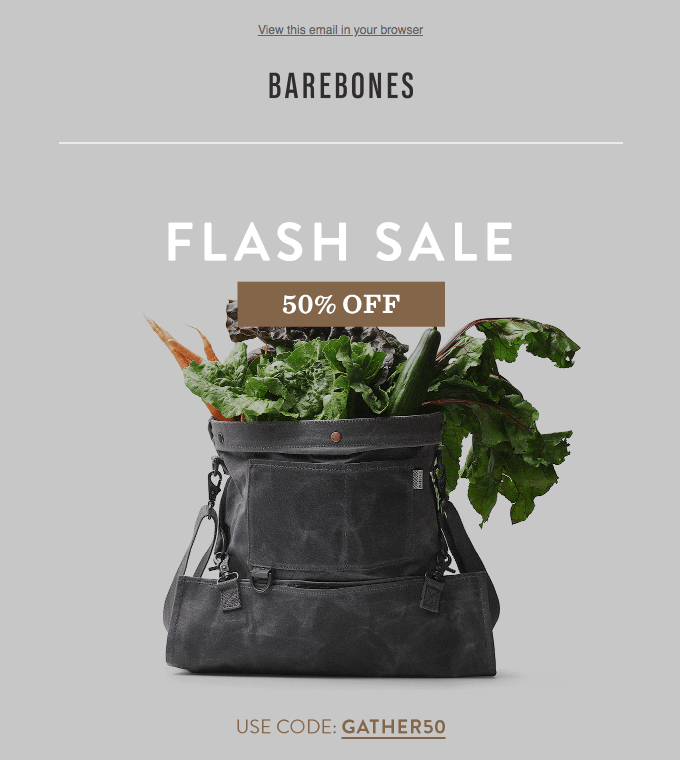
This e-commerce email marketing example from Barebones uses time-sensitive language and minimalism to create urgency and encourage immediate action.
8. Loyalty Program Updates
Keep customers engaged with your brand by sending them updates about their loyalty points or rewards. Encourage them to use their points or redeem rewards for discounts.
Template:
Subject: You’ve Earned [X] Points – Time to Redeem!
Body:
Hi [Customer Name],
Great news! You’ve earned [X] points in our loyalty program. Redeem them for discounts on your next order. Keep shopping to earn even more rewards!
Example:
McDonald's sends an email to their loyalty members letting them know about exclusive benefits and rewards points, as well as encourages the client to view rewards and spend the points.

McDonald's email is a great example of email marketing for e-commerce that nurtures loyalty and keeps customers engaged.
9. Replenishment Reminder Emails
For products that customers may need to reorder, like supplements, cosmetics, or food items, send a replenishment reminder email.
Template:
Subject: Time to Restock Your Favorite [Product]!
Body:
Hi [Customer Name],
We noticed it’s been a while since you last bought [Product]. It’s time to restock! Order now and enjoy free shipping on your next order.
Example:
Chewy sends an email reminding customers to restock pet supplies like food and medications, based on their previous orders.

This e-commerce email idea works especially well for consumables and subscription services, where regular repurchasing is common.
10. Back-in-Stock Notifications
When a popular product that was out of stock is available again, notify customers who expressed interest in the item. This type of email is highly effective for driving sales.
Template:
Subject: Back in Stock – Your Favorite [Product] Is Here!
Body:
Hi [Customer Name],
Great news! The [Product] you’ve been waiting for is now back in stock. Don’t miss your chance to grab it before it sells out again! Shop now.
Example:
Uniqlo sends back-in-stock notification emails for high-demand products that were previously out of stock, encouraging customers to act fast before they sell out again. Besides, they offer to look through new collections to encourage buying new items, too.
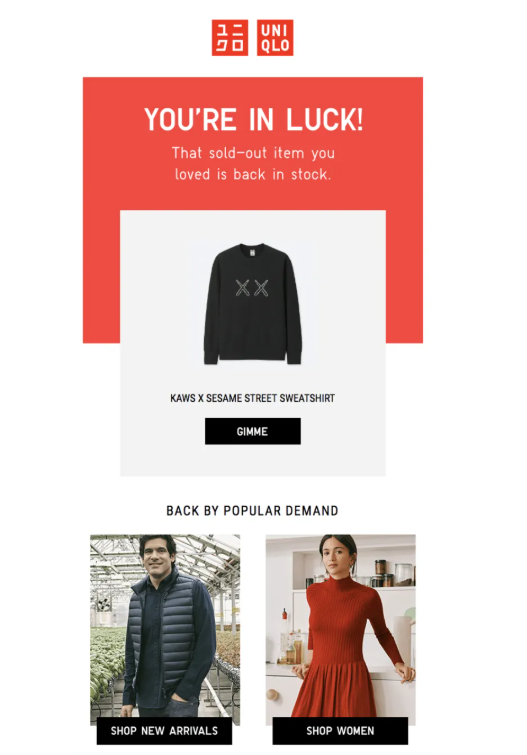
Uniqlo uses e-commerce email templates to drive urgency and ensure customers don’t miss out on sought-after items.
Key Takeaways for Your E-commerce Email Strategy
Personalization is Crucial: Tailor your emails to your customers’ preferences, behavior, and past purchases.
Create a Sense of Urgency: Use limited-time offers, flash sales, and time-sensitive discounts to motivate immediate action.
Segment Your List: Target specific customer groups with relevant messages to increase engagement and conversions.
Test and Optimize: Continually test different subject lines, email designs, and calls-to-action (CTAs) to improve your email marketing for e-commerce.
Provide Value: Make sure your emails are offering something useful to the recipient, whether it’s a discount, product recommendation, or helpful content.
Conclusion
Effective e-commerce email marketing is much more than simply sending pale, voiceless promotional emails. You should go further in understanding your audience and to send targeted and personalized valuable content; doing so will increase engagement and drive sales. Feel free to incorporate these fresh e-commerce email ideas and templates into your strategy and ensure that your email campaigns stand out in 2025 and beyond.
Frequently Asked Questions
The best email marketing platform for e-commerce depends on your specific needs, such as automation features, integrations, and analytics. Some top platforms include:
Klaviyo: Known for its powerful segmentation and automation features tailored for e-commerce businesses.
Mailchimp: A user-friendly platform with e-commerce integrations, making it easy to design and send campaigns.
Omnisend: Great for multi-channel marketing, combining email, SMS, and web push notifications.
ActiveCampaign: Offers advanced email automation and segmentation for personalized marketing.
E-commerce emails are email marketing messages designed to promote online stores, products, and services. They help businesses engage with their customers, build relationships, and drive sales. These emails include a wide variety of types, such as welcome emails, abandoned cart reminders, post-purchase follow-ups, seasonal sales emails, and more.
To write an effective e-commerce email, follow these steps:
Personalize: Address the customer by their name and tailor content based on their shopping habits or preferences.
Craft an engaging subject line: Make it compelling and time-sensitive to increase open rates.
Offer value: Whether it’s a discount, free shipping, or exclusive offer, ensure the recipient finds value in the email.
Clear call-to-action: Tell the reader exactly what you want them to do, such as "Shop Now" or "Claim Your Discount."
Keep it simple: Use concise language and a clean design to make your email easy to read and understand.
The 60/40 rule in email marketing refers to the balance between content and promotional messaging. It suggests that 60% of your email content should be educational, entertaining, or informative, while the remaining 40% should focus on promotional offers, discounts, or product recommendations. This balance helps build trust with your audience while still driving sales.
